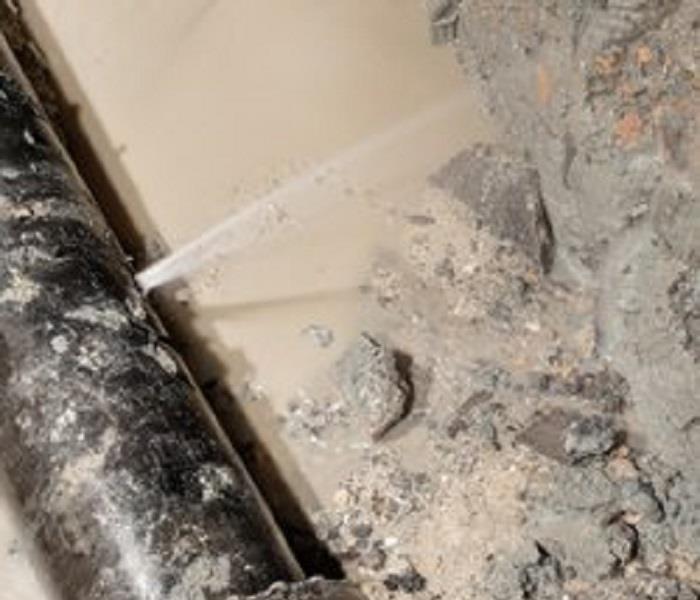The Top 5 Causes of Water Damage and How to Prevent Them
5/2/2017 (Permalink)
Here are the Top 5 household items that cause water damage to your home.
- Plumbing Supply: A failure to our supply system has the ability to cost you about $5,000 after your insurance deductible, dependent on your insurance company. Indicators of such a problem include an increase in your monthly water bill, banging pipes, rust stains, moisture in the walls or the floors, and signs of wet soil erosion near the foundation. You can take steps to avoid such a problem by ensuring that your pipes will not freeze during the cold winter months. To keep your pipes from freezing in the cold, set your thermostat at 60 degrees, let your faucets drip to get the water out of your pipes, and insulate your pipes to keep them warm. Additionally, you can install a house leak detection system that will alert you that there is a leak in your household.
- Toilet: One of the most common source of water damage is a toilet failure and one-third of toilet failures are caused by overflowing or clogged toilet. After taking out the deductible water damage due to toilet failures typically cost more than $5,500, dependent on the insurance company. To avoid a toilet failure in your home, wait until the valve had finished refilling the tank and bowl after flushing. If it looks as tough an overflow might be coming, turn off the supply valve to avoid the water spilling out. Another way to prevent the toilet failure is to inspect your toilet's components twice a year. This inspection should include the supply valve, the flush valve, and the supply line. While you're at it, you might want to consider upgrading your toilets supply line to a sturdier steel hose.
- Water Heater: Most water heater failures are caused by slow leak or a sudden burst in the tank. The next common cause of water heater damage is due to the supply line. Checking the life expectancy and warranty for your water heater will tell you whether or not you need to replace your water heater. To increase the life expectancy and delay replacing your water heater, perform proper maintenance. This includes flushing sediments and inspecting your heater's anode rod. Inspecting the water heater's valves will ensure that they are all in proper working order. Whenever possible, you should use ball valves instead of gate valves which will improve it's working condition.
- Plumbing Drain: Sewer backups are at fault for more than half of plumbing system failures with the majority of these issues occurring in the southern states. Problems with the plumbing drain system run at average cost of $4,000 per incident after the insurance deductible. With that type of the cost per incident, homeowners will want to do what they can to prevent such an event. The easiest way to prevent these problems is by refraining from pouring grease down the drain. Another way you can prevent sewer problems is by installing a back-flow prevention assembly for the home's sewer system if the home's sewer system is connected to the cities system. This is generally a problem for older homes. If you are considering planting trees, doing so away from lateral drain lines will ensure that the roots do not end up damaging any piping.
- Washing Machines: Washing machine hose failures are at fault for more than half of the claims that the IBHS study had recorded. The average cost to the homeowner after their insurance deductible came to $5,300 per incident. The reason why these incidents are so troublesome is that a burst inlet hose can cause an entire laundry room to flood in just a matter of minutes. To avoid this occurring, it's recommended that you replace the rubber hoses every three years. If you want to go a step further, you can replace the rubber hoses with braided steel hoses. Other tips include turning off the and cold water supply valve when you leave the house and not overloading the machine.





 24/7 Emergency Service
24/7 Emergency Service